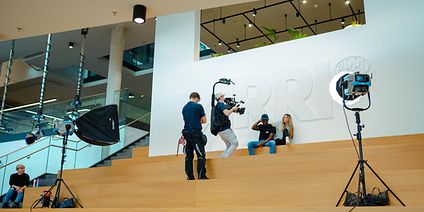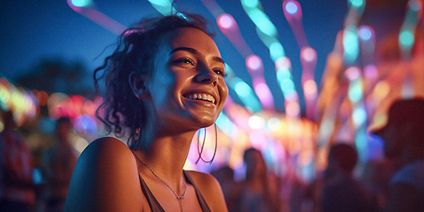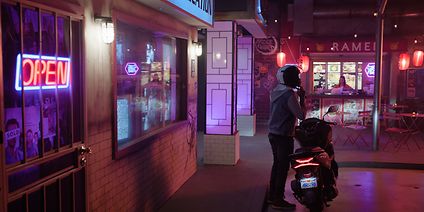Setting up a studio for videography involves many decisions, from selecting the right camera to choosing the appropriate backdrop. However, one particularly important aspect is lighting. This article will dive into the essentials of studio lighting and the critical role of the color rendering index (CRI) in achieving professional-grade videography.
The importance of lighting in videography
Lighting serves as one of the backbones of videography. It has the power to shape the viewers’ perception, guide their focus, and create tangible depth in a two-dimensional medium. By controlling light, your company or organization can set the mood, establish the time of day, or even convey complex emotions in corporate video productions.
In a studio setup, lighting becomes even more crucial. It allows you to control every aspect of your scene’s illumination, free from the unpredictability of natural light. The right lighting setup provides consistency, enhances visual clarity, and highlights the subject favorably.
Understanding CRI and TLCI: key lighting metric
The color rendering index (CRI) measures the ability of a light source to reveal the colors of various objects faithfully, compared to natural light sources. Also, the television lighting consistency index (TLCI) has established itself as a meaningful measurement parameter for the media industry. The value of these indexes, which better represent the needs of image recording, should be above 90.
High TLCI and CRI values (above 90) indicate that the light source displays colors more accurately, leading to more vibrant and true-to-life images. Conversely, low values suggest distorted colors that could lead to your footage looking unappealing and unprofessional.
Lighting setup essentials
Here are some essentials to keep in mind:
- Three-point lighting: This classic setup involves three light sources—key light, fill light, and back light. The key light serves as the primary light source, the fill light softens the shadows created by the key light, and the back light separates the subject from the background, adding depth to the scene.
- Adjustable lights: Having adjustable lights allows you to control the intensity and direction of the light. This gives you flexibility to experiment with different lighting effects and adapt to various shooting scenarios.
- High CRI luminaire: Invest in lights with high CRI values to ensure accurate color representation. This is particularly important if you're shooting products, food, fashion, or any subject where color accuracy is crucial.
- Diffusion and reflectors: Diffusers soften the light, reducing harsh shadows and contrasts. Reflectors help bounce light to fill in shadows, offering more control over your lighting conditions.
- Consistent lighting conditions: Maintain consistency in your lighting setup to ensure uniformity across different shots, especially when shooting a series of videos.
By following these essentials and keeping CRI in mind, you can ensure high-quality lighting for your studio videos. Ultimately, this will help you create professional and engaging corporate videos that stand out from the crowd.
Enhancing studio lighting with ARRI
At ARRI, we understand the importance of quality lighting in videography. Our range of high-CRI (and TLCI) lighting equipment is designed to deliver exceptional color accuracy, ensuring your subjects are seen in the best light. From LED and tungsten lights to M-Series lights and a variety of diffusers and reflectors, our products offer reliability, versatility, and superior performance.
Starting with a setup studio for videography is a significant undertaking, but with a thorough understanding of lighting essentials, you can create a professional environment that can bring your vision to life.
Storyboarding and storytelling
The next step in creating impactful videos is to craft compelling stories. This involves constructing well-thought-out storyboards that outline the scenes, characters, locations, and tone of your videos.
A successful storyboard should be easy to comprehend while still conveying all necessary information. To do this effectively, a clear understanding of different types of video storytelling is crucial.
- Narrative storytelling: Narrative storyboarding is great for conveying complex concepts and emotions. Characters, storylines, dialogue, and music are used to create an immersive viewing experience that resonates with viewers.
- Documentary storytelling: Documentary videos offer an educational take on a particular subject. This type of storyboarding is great for showcasing an organization’s mission, history, and values in a factual yet engaging way.
- Animation storytelling: Animation videos are highly versatile and can be used to explain almost any kind of concept in a visually appealing way. From 3D animation to hand-drawn illustrations, there are endless possibilities when it comes to creating an animated story.
By understanding the fundamentals of corporate video storyboarding and storytelling, you can create engaging videos that will captivate your viewers and leave a lasting impression. With the right approach, you can take your corporate videos to the next level and reap the rewards of professional videography.
Final Thoughts
Creating engaging stories for corporate videos requires careful attention to detail. By understanding the importance of lighting and CRI, integrating visual effects into the storytelling process, and utilizing state-of-the-art ARRI lighting equipment, your company or organization can create captivating visuals that will stand out from the competition.







